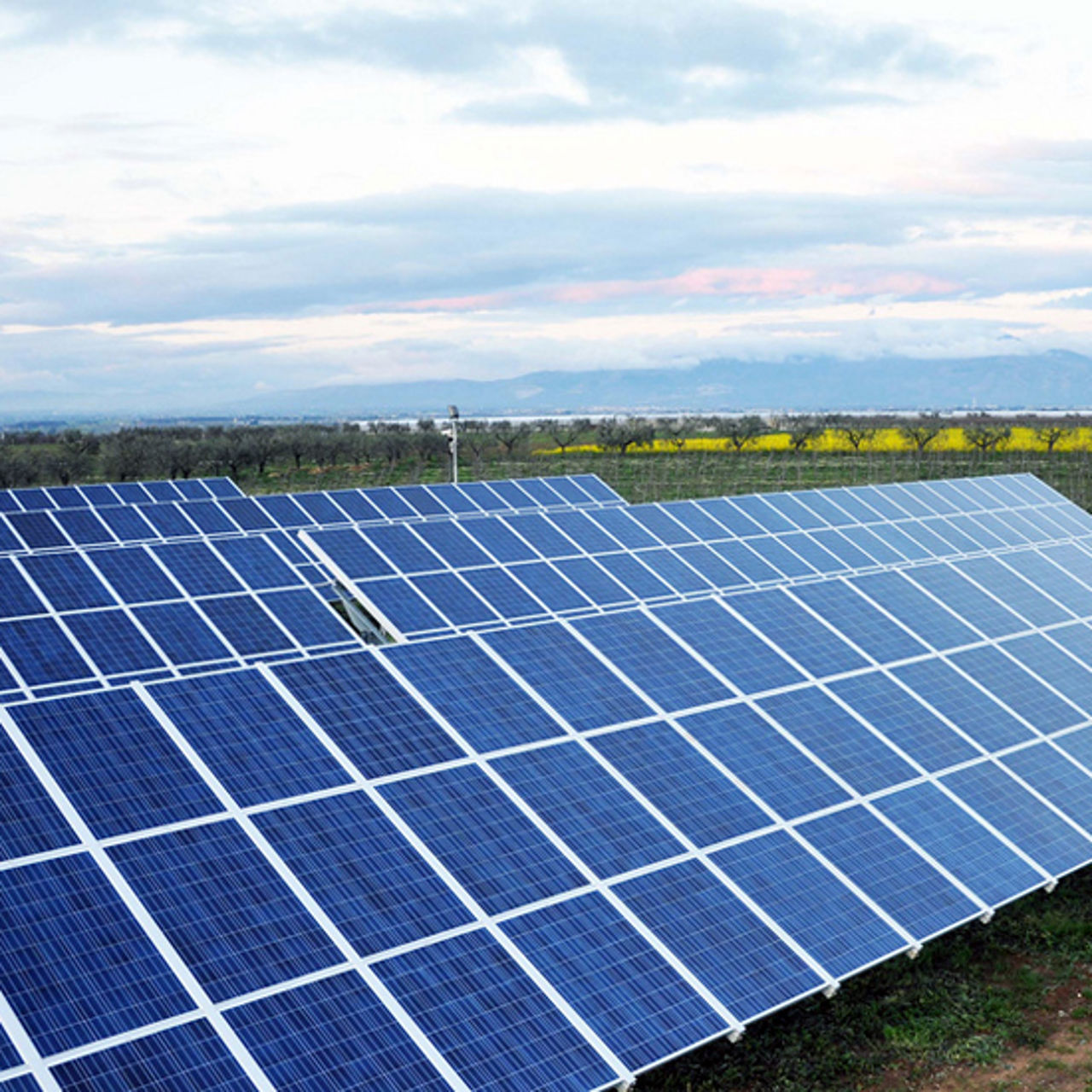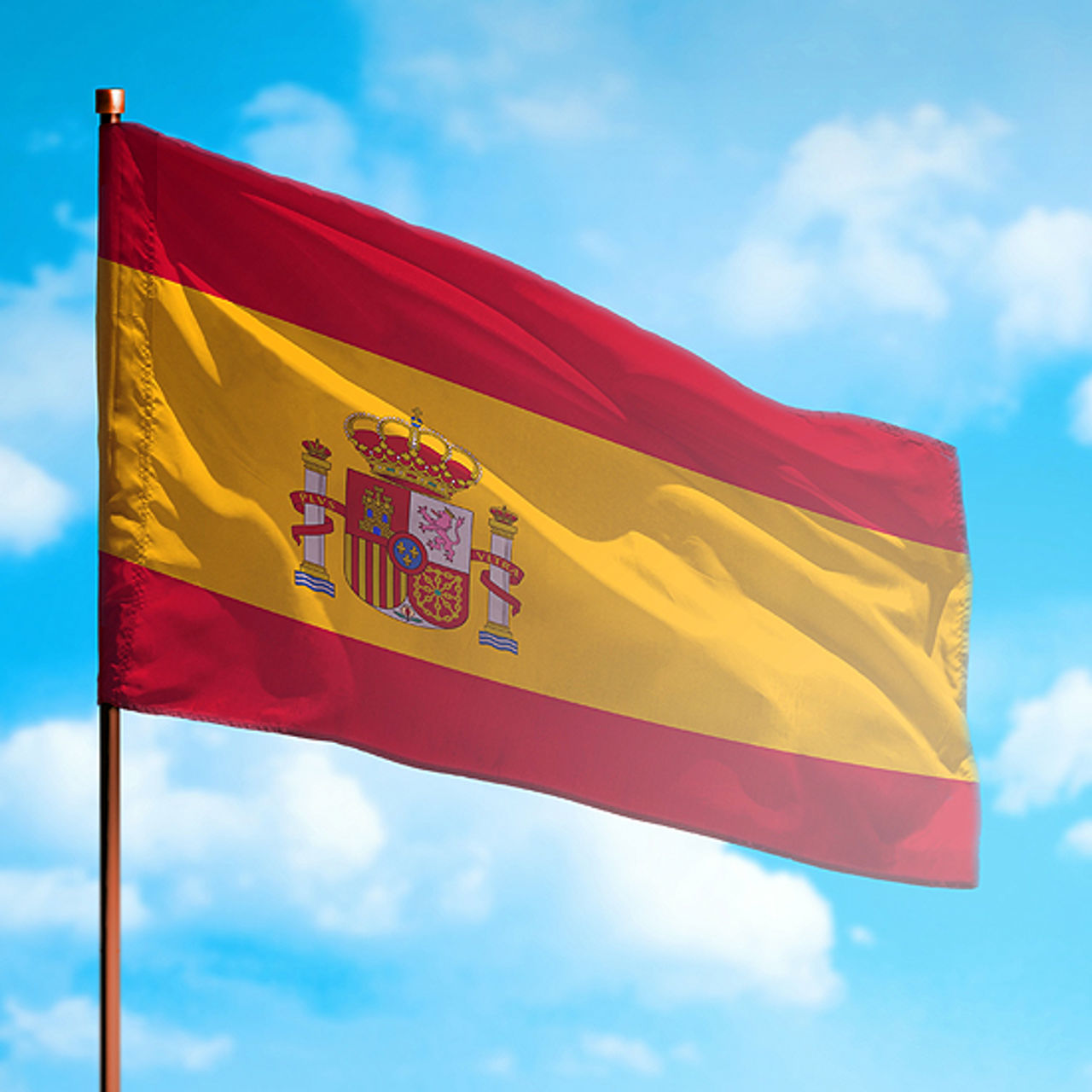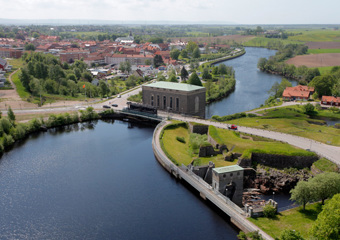
Spain is well suited for solar power.
Country series: Green ambitions in Spain
Renewable sources accounted for almost 47 per cent of the electricity produced in Spain in 2021. This is the highest share of renewable electricity since measurements began, but short of the Spanish government’s target of a renewable share of 74 per cent by 2030.
Spain currently ranks second in Europe for installed wind power capacity, and fifth globally. In 2020 the Spanish government submitted its national energy and climate plan (NECP) to the EU, setting out Spain’s ambitious climate targets for 2030.
“Spain has very ambitious targets for the transition to green energy, especially by increasing its production of solar and wind power,” says Tiago Thomaz, who manages Statkraft’s department Origination Iberia, which is located in Madrid.

The goal is to increase the share of solar power from its current level of eight per cent to 22 per cent of total electricity production by 2030, with wind power set to rise from just over 20 per cent in 2020 to 31 per cent in 2030. This means that more than half of Spanish electricity production will be generated through solar and wind power by 2030.
“There are applications totalling 150 GW from solar and wind power projects, seeking to be connected to the network, and many projects are in line to submit applications. The Spanish authorities are also seeking to increase energy storage capacity, but this work will likely only gather speed after 2025,” Thomaz explains.

The Spanish government has launched a dedicated strategy for energy storage, aiming to increase the current capacity of 8.3 GW to 20 GW in 2030 and 30 GW in 2050. To achieve this, the government is facilitating new projects, promoting the development of green hydrogen, and doing research on and building new businesses based on green technology.
Spain is also planning new electricity exchange cables with Portugal and France. It is the EU’s goal that at least 10 per cent of the electricity generated in a power station in any EU country will be transported to a neighbouring country.

Tiago Thomaz manages the Statkraft department Origination Iberia and works from the company’s Madrid office. The unit is part of the business area Markets

José Miguel Ferrer is Statkraft’s country manager for Iberia and works from the company’s Valencia office. The unit is part of the business area Europe.

Facts about NECP
The targets in the Spanish national energy and climate plan (NECP) 2021–2030 are:
-
Greenhouse gas emissions to be 23 per cent lower than in 1990.
-
Renewable energy sources to account for 42 per cent of the country’s energy mix.
-
74 per cent of electricity production to come from renewable sources.
-
Coal power to be phased out and Spain to be coal-free by 2025.
-
Reduction in nuclear energy – four of Spain’s seven nuclear power stations to be shut down by 2030.

The Serra de Tallat wind farm in the province of Leida in Catalonia.
Favourable climate for green projects
Spain is second only to France in the EU in terms of area. In addition to occupying most of the Iberian Peninsula, Spain also includes the Canary islands archipelago in the Atlantic ocean, the Balearic islands in the Mediterranean and the enclaves Ceuta and Melilla in North Africa.
As part of the Spanish government’s new economic scheme for renewable energy (Régimen Económico de Energías Renovables – REER), the authorities have launched a number of incentives to accelerate the green shift in Spain. One of these is to hold auctions for solar and wind power capacity. The first of these auctions was held on 26 January 2021.
“These auctions are intended to support the development of solar and wind power, which will be important for reaching Spain’s climate targets by 2030,” says Tiago Thomaz.
There are other incentives targeting the demand side, including energy-intensive industry, by stimulating greater use of renewable energy sources.
“One example is the incentive mechanism through which consumers can enter into long-term power-purchase agreements (PPA) with companies that deliver renewable energy,” he explains.

The Spanish government has also set up a fund offering credit to small and medium-sized companies that have difficulties obtaining loans from banks.
In addition, up to EUR 800 million will be invested in the next two years to stimulate the sale of electric cars. Although there are 25 million cars in Spain, under one million are electric. The government estimates that the number of electric cars will reach five million by 2030.
“The climate for renewable energy in Spain is very favourable at the moment. The various governmental measures will help the country move towards a greener energy market more quickly,” says Thomaz.
Investing in solar power
Since entering the Iberian market in 2018, Statkraft has become an active player in developing renewable energy in Spain and Portugal.
Tiago Thomaz opened Statkraft’s offices in Madrid in 2019. In 2021, José Miguel Ferrer was appointed new country manager for Statkraft Iberia, where he works from the Valencia office.
“As new Country Manager I am pleased to be able to play a role in this important process Spain is involved in, making the shift to a sustainable energy model,” Ferrer says.

Statkraft has ambitious plans to develop land-based wind power and solar energy in the region.
“Statkraft is Europe’s largest producer of renewable energy. With 125 years’ experience, we are determined to play a decisive role in achieving the goals set out in the national integrated energy and climate plan,” Ferrer says.
Statkraft bought the company Solarcentury, a world leader in the development, construction, and operation of large solar power plants, in 2020. Statkraft has more than 60 employees at its Madrid and Valencia offices in Spain.
In May 2021 the company announced that it will invest EUR 200 million in the development of four new solar farms in the Cadiz region. The total capacity of these sites will be 234 MWp.
Statkraft also has a key role in securing the required funding for renewable power projects.
“In 2018 we signed our first power purchase agreement with the German company BayWa r.e., which develops solar energy projects. This first project, the solar energy project Don Rodrigo, is near Seville and is Europe’s largest non-subsidised large-scale solar power project. We have signed other PPAs with other development companies. These agreements include opportunities for non-subsidised development of renewable solar energy,” says Tiago Thomaz.

Facts about Spain
-
Population: 47 million
-
Capital: Madrid
-
Form of government: Constitutional monarchy
-
Prime Minister: Pedro Sánchez
-
Languages: Spanish (and Catalan, Galician, and Basque in some regions)


Other country series articles

Country series: German energy revolution
2017 marked the first year when more power was produced from renewable sources than from coal in the industrial giant Germany. Nuclear power and coal power will be phased out over the next few years,...
Read more

Country series: Sweden global leader in reducing climate impact
Few countries in the world use more energy per capita than Sweden. Nevertheless, its greenhouse gas emissions are low, thanks to renewables generating a large part of the power consumed. The homeland...
Read more

Country series: Albania's hydropower important for the Balkans
Albania can play a key role when the Balkan countries phase out fossil fuels in favour of renewables. Statkraft already operates in Albania, but political risk can put a damper on further growth.
Read more

Country series: Ireland with an ambitious climate action plan
About 40 per cent of Ireland's electricity currently comes from renewable sources, but the country aims to increase this to 70 per cent by 2030.
Read more

Country series: Green ambitions in Spain
Renewable sources accounted for almost 47 per cent of the electricity produced in Spain in 2021. This is the highest share of renewable electricity since measurements began, but short of the Spanish...
Read more

Country series: Resource wealth in Brazil
Brazil is blessed with a wealth of natural resources and one of the world's cleanest power supplies. Large-scale investment in solar and wind power will provide even more renewable power in the years...
Read more

Country series: Ireland with an ambitious climate action plan
About 40 per cent of Ireland's electricity currently comes from renewable sources, but the country aims to increase this to 70 per cent by 2030.
Read more

Country series: United Kingdom, a leader in ambition
The United Kingdom has major ambitions for cutting its greenhouse gas emissions. The goal is to become a zero-emission society by 2050. Getting there will be a taxing process and requires strong poli...
Read more

Country series: Faster progress on renewables in Italy?
With its long coastline, high mountains and sunny Mediterranean islands, Italy should be well placed to increase its production of renewable energy. The challenge is to link power production with co...
Read more

Country series: The United States is still a land of opportunity
Since Statkraft opened an office in the U.S. in 2015, the company's U.S. operations have revolved largely around trading in CO2 allowances and renewable energy certificates. Statkraft is now well posi...
Read more

Country series: Renewables grow fast in Poland
Poland is one of the largest countries in Europe both in terms of energy consumption and energy production, and coal is still the main energy source. At the same time, Poland has the fastest growing...
Read more

Country series: Green visions in France
Nuclear power nation France faces massive changes in the energy sector in the years to come. An ambitious commitment to wind and solar power is one of the measures that will ensure that the climate ...
Read more

Country series: Chile leads the way with commitment to renewable energy
Chile has ambitious climate targets: 70 per cent of the country's electricity will come from renewable sources by 2030, and the country will be carbon neutral by 2050.
Read more

Country series: The Netherlands needs a strong commitment to renewable energy
The Netherlands' actual cuts in greenhouse gas emissions have been small in recent decades. When the government lost a climate change lawsuit, it forced a new national climate agreement that should ge...
Read more

Country series: Sun rising for Croatia
With its sunny Mediterranean coast, Croatia is one of Europe's fastest-growing markets for solar power. By utilising its renewable energy potential, the country can eliminate electricity imports.
Read more